It’s come down to two of the most revered blender brands in the world, and the battle that they’re going to wage will be legendary.
Well, maybe not that epic, but we’re going to dig deep and determine the primary differences in just about every single aspect between these two brands.
You could not have two brands that try to appear to be the same like Ninja and Vitamix: both dedicated to quality, pushing the boundaries of what kitchen blenders can do, and they’re good at it.
If you’re like us, you want something that’s fine-tuned to meet your specific kitchen needs, so let’s start the battle.
If you’d like to see a graphical breakdown of the blenders comparison, we got you covered:

Share This Image On Your Site
Differences in Motor Power
Ninja
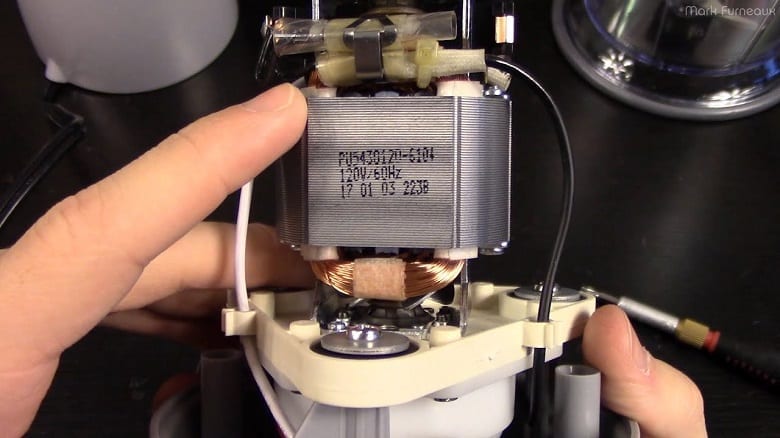
It’s hard to describe perfection, you know?
Ninja spares no expense when it comes to their motors, which is what gives their blenders a competitive edge with extra ice-crushing power.
People don’t realize it, but the blades can be duller if the motor is high powered and capable.
Ninja gives you the best of both worlds with sharp blades and the ability to turn ice into a fine snow in seconds.
As far as durability goes, Ninja blenders are likely to “burn out” before a Vitamix blender would.
That’s telling us two things: Vitamix usually lasts longer, but since Vitamix blenders are usually under warranty for a decade, you’re still getting an insane amount of time out of your Ninja blender.
Since the price point for a ninja is so much lower, it’s justifiable, and replacement motors or parts don’t have to cost a lot. They’re powerful motors, and they’re built to last, just a little bit less than Vitamix.
Vitamix
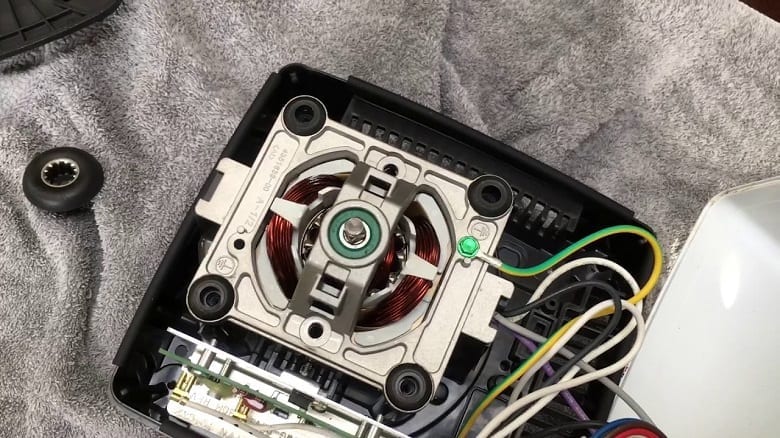
Vitamix motors are built with durability in mind, but most of the time, Ninja blenders offer more wattage for half the cost.
There’s something to be said about quality and longevity that we’ll get into in a moment, but you do get more motor power from Ninja for less money.
You’re looking at two very different, but top-tier blender systems that put the customer first. They want to, and continue to produce excellent electric motors that stand the test of time.
Vitamix often uses cool-running technology and ventilation to keep their motors cool, even when you end up running them repeatedly in a short amount of time.
While it’s extremely rare to make any Vitamix blender overheat, there is a failsafe within the motor that prevents damages from occurring.
It will automatically reset after the motor has had time to cool down, and restore power to the motor.
Differences in Container Volume and Capacity
Ninja
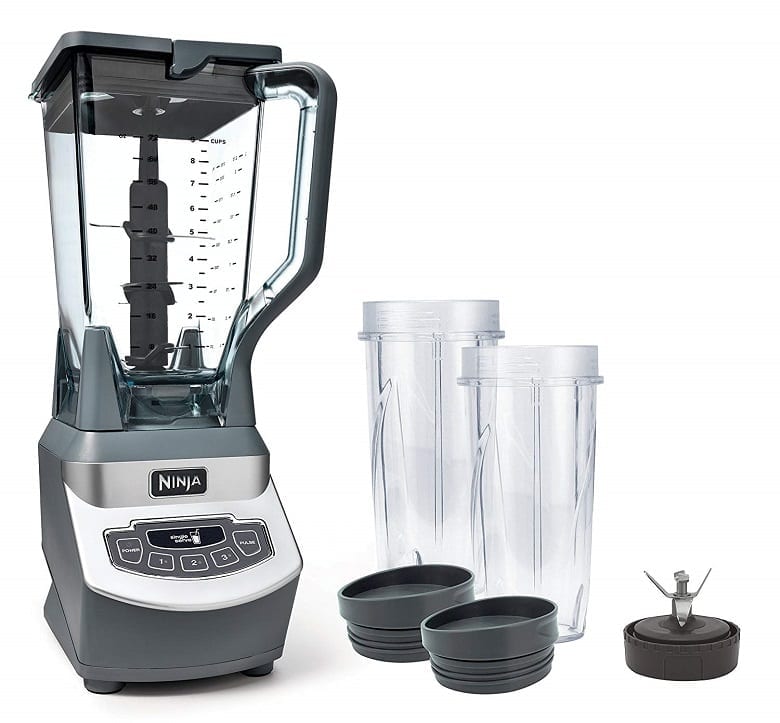
Most Ninja blenders come with a 48 oz or a 64 oz pitcher.
Comparably to Vitamix, these are honestly the same. There is one Ninja model where you can upgrade to a 72 oz blending pitcher, but it’s only so much of a jump from the 64.
The pitchers themselves are durable and ergonomic, featuring contour handles that allow you to maintain a perfect grip on the pitcher, no matter how full or heavy it is.
Ninja pitchers also tend to have a side spout, so you don’t have to watch your beverages leak down the side of the pitcher during pouring.
Vitamix
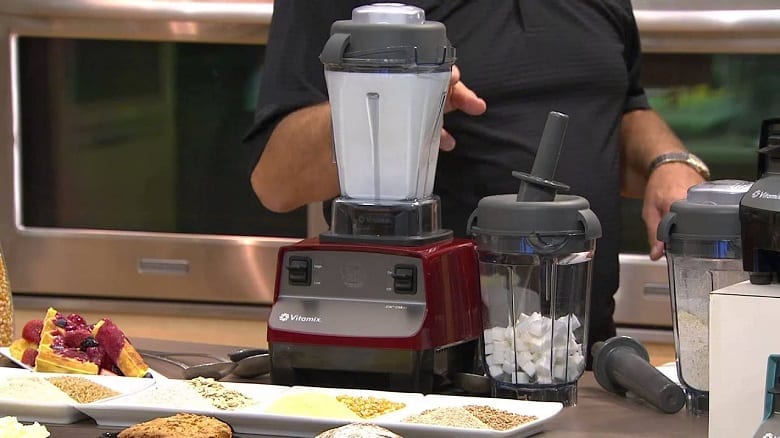
This is where it stays pretty similar.
Vitamix usually offers 64 oz blender pitchers, and they also have attachments for smaller, single-serve cups if that’s what you’re trying to do.
Vitamix includes self-detect technology, so the settings will adapt to the size of the pitcher or cup.
That means you won’t run it for too long or damage your container, because it’s actually impossible to do so (unless you just hold the pulse button for an hour).
Their pitchers are fairly plain looking, and don’t offer the same grip or dexterity that a Ninja pitcher does.
Differences in Longevity
Ninja
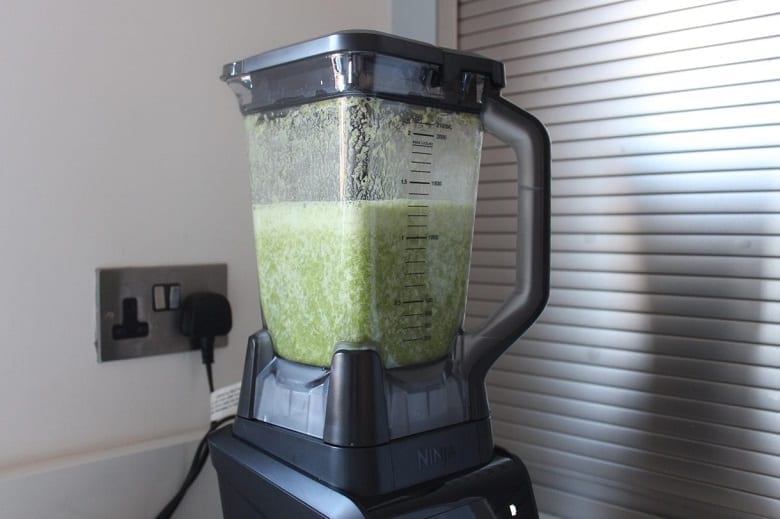
How long can you expect a Ninja blender to last?
According to the overwhelming majority of user reviews, forum posts, and answered questions all across the internet, you can expect them to last a darn long time.
Ninja sits on a precipice between quality and price, but they tow the line very well.
You can get a Ninja for a fraction of a Vitamix blender, and it might even be better for your personal needs, but the two tend to rival each other in longevity.
Vitamix does take the cake on how long you can expect the blender to last, though.
That’s partially due to their warranty differences, which we’ll get into in a moment, but also because of the preset modes.
One way to preserve a motor is to ease it into operation, and most Vitamix presets start with a slow speed and ramp-up to a higher one, whereas Ninja will just jump from 0 to 10 in no time.
It just puts a little more strain on the motor.
Vitamix
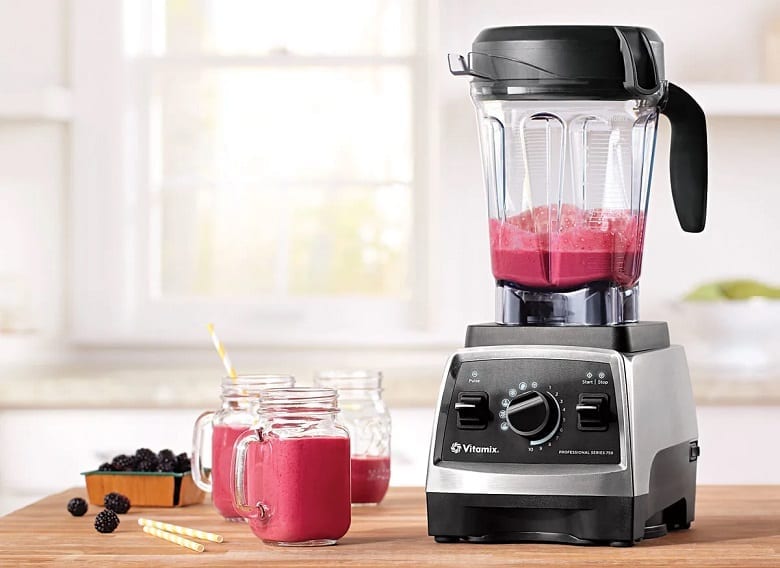
Vitamix are built to last, possibly more than any other blend brand in the world.
Whether you’re looking at their simple 310E series or the Vitamix 750 Professional (top-of-the-line model), Vitamix puts the same power and quality into the motor and electrical components.
When you look at the way a blender operates, it uses ramp-up time to ease into a preset operation. Vitamix modes can get complicated, but they all slowly accelerate the motor. You don’t want to just put immediate stress on it.
You’ll be paying for longevity, because Vitamix is typically more expensive than Ninja, no matter what class of blender you’re comparing.
It’s an investment: you can expect a Vitamix blender to last you for ten years, and after a simple repair or maintenance along the way, you can double that time to twenty.
Differences in Warranty
Ninja
Ninja doesn’t have the best history of keeping good warranties.
They’re great blenders, but often come with one-year limited warranties even on their professional models, like the 1,000 watt smoothie blender.
While that can be a bit upsetting, their customer service is absolutely fantastic, so you don’t have to worry about actually having that warranty fulfilled.
Their warranties are limited, meaning that comprehensive coverage (which covers almost everything) is difficult to find.
These limited warranties usually only cover manufacturer defects and problems that weren’t caused by user interference whatsoever.
The process of sending it back is a bit tedious, and Ninja will take the thing apart to figure out if there’s any reason that you might have caused the problem.
They’re a fairly basic company when it comes to warranties; it’s less about ensuring you’re happy and more about protecting profits. You can only fault a company so much for that, but with it’s still not what you’d expect from one of the most famous blender brands in America.
Vitamix
Vitamix warranties are phenomenal.
Not only do they last for years, but they’re designed to offer a full solution to any problems that you encounter.
Motor failure, electrical issues, you name it.
You have to inspect each warranty because the Pro 750 will be slightly different from the E310, but even then, you’re still getting good coverage.
On average, Vitamix blender warranties start out at five years, and up around ten years for the higher tier models.
That’s a ten-year guarantee that it’s going to hold up and continue to work perfectly, and that’s some good peace of mind.
In this regard, we like to view Vitamix as a company who’s far more focused on ensuring you actually enjoy the blender and get your use out of it than profits.
Since the initial cost is higher, they don’t have to play hardball with poor quality warranties or choppy wordplay. You can sleep easy when buying a Vitamix.
Differences in Application
Ninja

Ninja blenders are generally best for frozen beverages and desserts.
They can still be used as all purpose machines, but you’ll find that their strengths are best with frozen items.
Ninja likes to boost the power of their motors to around 1,000 or 1,500 with their professional grade models, which is more than you’ll ever need for a 64 oz pitcher.
It makes it excellent for frozen use, but still works well for just about everything else.
Ninja blenders don’t transfer heat from the blades as much, which is good for frozen food, but doesn’t do you any favors if you’re trying to blend soup and keep it hot.
With less preset options, you’ll be stuck with pulse and basic speed modes on most models, compared to the variable speeds and app-accessible programs for your blender that Vitamix offers.
Vitamix
Vitamix blenders can handle everything from desserts to smoothies and more, though it is deemed as an all purpose blender.
Some of the motors only match or come with a little less wattage than most Ninja blenders, so there’s technically less power even if it is being balanced in a good way through the cool-running motor.
You can absolutely make great tasting smoothies with a thick consistency in a Vitamix, it just might take longer than doing it in a Ninja.
One of the best things about Vitamix is that you can download the app for programmable modes that increase the number of uses you have.
While a Vitamix will have five basic modes and at least twelve more than you can download, Ninja usually has about four speeds without different ramp-up times.
In your VItamix, you can make something delicate like whipped cream, or crush ice into snow. It’s all up to you.
Differences in Overall Quality
Ninja
At the end of the day, Ninja is better built for smoothies and frozen beverages, will last you for five or more years without running into maintenance problems, and is built tough as nails.
With high wattage, high capacity motors, a Ninja blender can handle just about anything that you throw its way, regardless of what it is.
They’re a worthy investment, especially when you consider that you can get them at a fraction of the cost of a Vitamix.
Vitamix
When you look at the motors and housing, Vitamix has a higher quality than Ninja.
However, their pitchers aren’t nearly as good, because Vitamix blenders are susceptible to light scratching and divots that can harbor bacterial growth.
Vitamix blenders are a hefty investment, and while they are definitely worth it for everything you get, it’s a commitment that’s a little difficult to make.
If you’re starting a blended diet or just don’t want to have to worry about buying replacement blenders every couple of years, a Vitamix is the way to go.
Which is Easier to Use?
Vitamix blenders are easier to use than Ninja.
With a Ninja, you can set the speed and walk away, and some have 1-10 speed buttons, but their “set and forget” methods don’t hold a candle to Vitamix.
Both brands offer an easy time with removing the pitcher and reapplying it to the base.
It’s not like most blenders where you have to wiggle the pitcher around or hit the pulse button a few times to find the right spot to rest it, so both blenders have that going for them.
Both brands tend to use between four and six foot long cords that connect to the outlet, so there isn’t a problem with accessing them or finding a suitable spot to position them.
The similarities in quality and ease of use are far too similar to really say which is best, but with the preset modes, you can hit the settings on a Vitamix and walk away, and come back to a finished product.
That makes your overall blender use a bit easier.
Which is Easier to Clean?
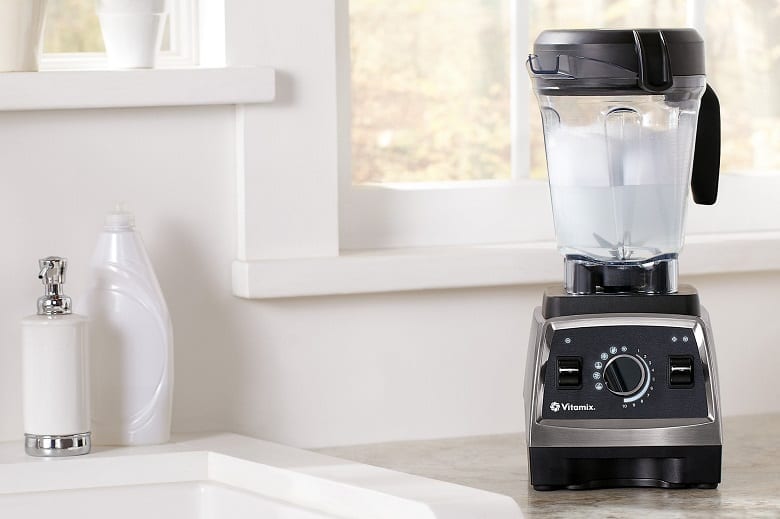
Vitamix comes with a self-cleaning mode that takes care of about 95% of whatever is stuck in the pitcher.
Cleaning out a pitcher is a pain when you have to get underneath the blades, but fortunately, that self-cleaning function removes just about everything from under there.
You put a drop of dish soap and a half pitcher of water on the stand, hit the specific mode, and fire it up. In under 60 seconds, it cleans itself on a high setting.
You’ll just have to rinse it out to remove the debris, and get whatever remnants are on the side of the pitcher.
Ninja blenders are also pretty easy to clean. While they don’t have a self-cleaning mode, they do come with a very linear pitcher that’s easy to rinse out.
Minimal water pressure and warm water will remove everything from the pitcher, you just might want to use a small metal tool (ironically, Vitamix sells one) to get underneath the blades and remove debris before it cakes onto the steel or the rubber gasket.
The less working parts, the better it is for cleaning.
Many Ninja blenders have a central spire in the pitcher cup that helps with blending and creating a good vortex.
That’s what makes them so good for smoothies, but it’s an extra bit to clean.
That being said, Vitamix pitchers tend to have more grooves in them and blades for food to hide, so if the self-cleaning function isn’t used or working properly, they’re a pain to clear out.
Which is Easier to Maintain and Repair?
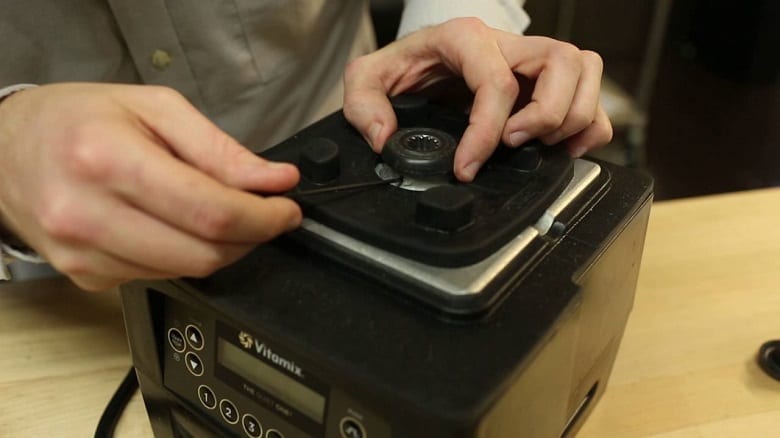
They’re both fairly complex systems.
In the short term, a Ninja would be easier to fix even if there are electrical issues. Since there are less programmable features, it actually helps out when it comes time to repairs and replacing parts on your own.
There are plenty of online tutorials on how to properly wire a blender and detect when a wire has blown or gone bad, and there’s less going on inside of a Ninja blender motor housing than with a Vitamix.
This is where we come back to the warranties.
Vitamix will fix electrical issues, so long as they weren’t directly caused by the user, but when the warranty goes out you are left with a more complicated system to repair. If you don’t fancy yourself much of a repairperson at all, then you would do best to get a Vitamix and enjoy the extended warranty while it lasts.
Aftermarket repairs can be made by shops later.
Either Way, You Win
Ninja is the cheaper choice, but Vitamix is the stronger and longer lasting option.
At the end of the day, you’re faced with two excellent brands, they just have different strengths and weaknesses in different areas.
Vitamix will be your best long-term choice, but Ninja has a lot of power under the hood that can create some truly fantastic beverages.
Vitamix is more versatile for an all purpose blender, but it’s hard to argue that Ninja smoothies have a better consistency.
The choice is up to you, and if you want to learn even more about both of these brands, you can check out the buying guides for each and make an informed decision your next kitchen investment.
Subscribe To Stumpf Studio Newsletter
By entering your email address you agree to get email updates from Stumpf Studio. We'll respect your privacy and unsubscribe at any time.
